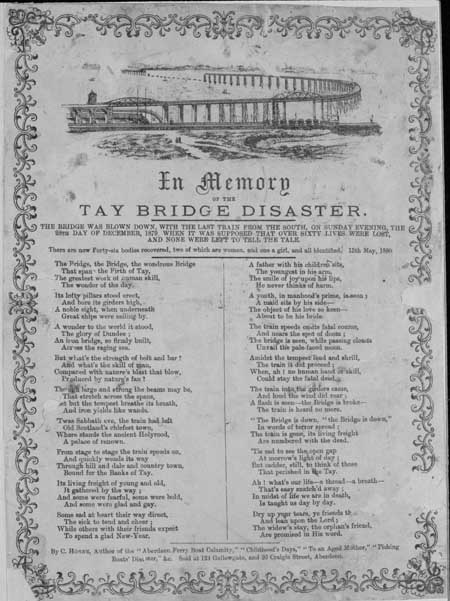
 |
| home | background | illustrations | distribution | highlights | search & browse | resources | contact us |
Broadside ballad entitled 'In Memory of the Tay Bridge Disaster' |
TranscriptionIn Memory OF THE TAY BRIDGE DISASTER. THE BRIDGE WAS BLOWN DOWN, WITH THE LAST TRAIN FROM THE SOUTH, ON SUNDAY EVENING, THE 28TH DAY OF DECEMBER, 1879, WHEN IT WAS SUPPOSED THAT OVER SIXTY LIVES WERE LOST, AND NONE WERE LEFT TO TELL THE TALE. There are now Forty-six bodies recovered, two of which are women, and one a girl, and all identified. 15th May, 1880
Its lofty pillars stood erect, A wonder to the world it stood, But what's the strength of bolt and bar ? Though large and strong the beams may be, 'Twas Sabbath eve, the train had left From stage to stage the train speeds on, Its living freight of young and old, Some sad at heart their way direct, A father with his children sits, A youth, in manhood's prime, is seen : The train speeds on its fatal course, Amidst the tempest loud and shrill, The train into the girders came, "The Bridge is down, "the Bridge is down," 'Tis sad to see the open gap Ah ! what's our life-a thread-a breath- Dry up your tears, ye friends th By C. HORNE, Author of the "Aberdeen Ferry Boat Calamity," "Childhood's Days," "To an Aged Mother," "Fishing
|
Date published:
1880 shelfmark: APS.3.81.9

|